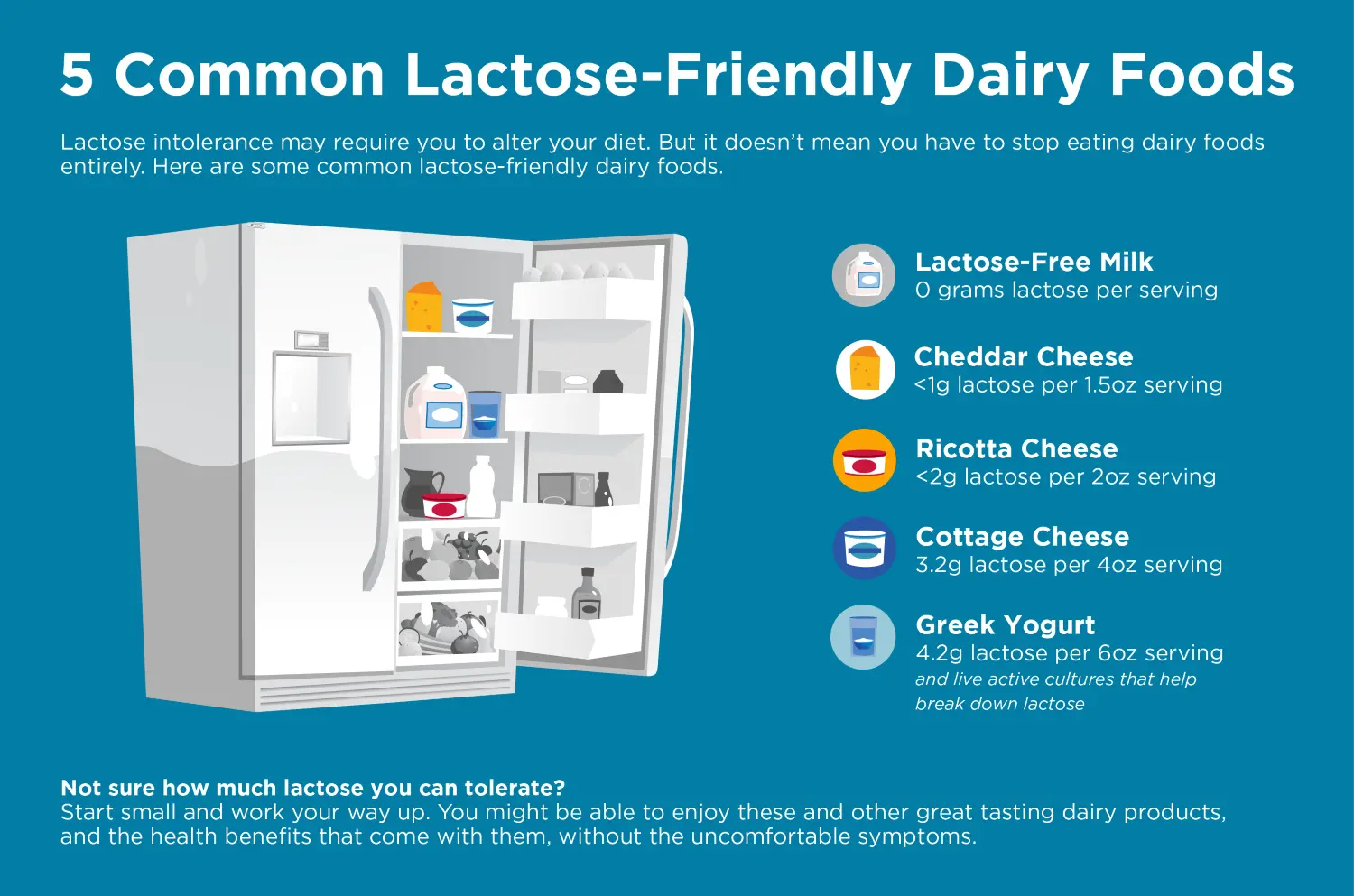The Difference Between Lactose Intolerance and Dairy Allergy
While it’s not uncommon for people to confuse them, lactose intolerance and dairy allergy are two distinct, diagnosable conditions with vastly different symptoms and nutritional solutions. Knowing the difference between lactose intolerance and a dairy allergy can help you understand what your options are and prevent unnecessary dietary restrictions.
Lactose Intolerance vs. Dairy Allergy
Lactose intolerance and dairy allergy, and the difference between them, aren’t as straightforward as people may think. As a baseline, these are the core points to know:
- Lactose intolerance and dairy allergy are two separate and unrelated conditions.
- Lactose intolerance is an inability to fully digest lactose and can result in corresponding digestive symptoms when lactose is consumed.
- Dairy allergy is a condition where the immune system reacts to the proteins in milk and other dairy foods.
- People with lactose intolerance have options in the dairy case like lactose-free or lower lactose choices.
- People with a dairy allergy should avoid dairy foods.
- The best way to find out if you have lactose intolerance or a dairy allergy is to visit your doctor.
Understanding Lactose Intolerance
To fully understand what lactose intolerance is, it’s important to know what lactose is and how it’s normally digested. Lactose is the natural sugar found in milk and some other dairy foods made from milk., Once consumed, it is broken down into glucose and galactose by a natural enzyme called lactase, making it easy to digest.
So, what is lactose intolerance? Lactose intolerance is an inability to fully digest lactose often due to lack of enough lactase enzyme, and the corresponding digestive symptoms that can occur when lactose is consumed. This condition can develop over time when your body is unable to produce enough lactase, and is characterized by a number of symptoms, which can include the following:
Symptoms of lactose intolerance
- Abdominal pain
- Bloating
- Diarrhea
- Gas
These symptoms, which separate lactose intolerance from lactose malabsorption — a condition where the small intestine can’t fully digest lactose but the body experiences no symptoms — usually occur within roughly 30 minutes to a few hours of eating or drinking something containing lactose.
Additionally, the intensity of these symptoms can fluctuate depending on how severe the lactose intolerance is and how much lactose was consumed. So, for example, someone with a more severe case of lactose intolerance may experience worse bloating than someone who has a mild case, even if they both just consumed the same amount of a dairy food that contains lactose. Similarly, if two people with the same severity of lactose intolerance consume different amounts of that same dairy food, the person who consumes the higher amount may experience worse symptoms.
Since the amount of lactose varies between different dairy foods — from no and minimal lactose to higher amounts, especially as lactose-free milk and other dairy innovations have become more widely available — people with lactose intolerance are commonly able to avoid symptoms while keeping dairy foods and their essential nutrients in their diets. While lactose intolerance requires managing dairy choices, navigating a dairy allergy is entirely different.
Understanding a Dairy Allergy
Also known as a milk allergy, a dairy allergy is a condition where the immune system overreacts to the proteins in milk and other dairy foods. Symptoms can vary from mild to severe and are noted below:
Symptoms of dairy allergy
- Hives, itching, swelling
- Difficulty breathing
- Coughing or wheezing
- Vomiting
- Bloating, cramps
- Bloody stool
- Diarrhea
Some of these symptoms align with symptoms of lactose intolerance, which is why some people may confuse the two conditions. Remember, lactose intolerance is a digestive condition related to lactose, but dairy allergies are an immune response to the two key proteins found in milk: casein and whey. And because most dairy foods contain these milk proteins, dairy foods should be avoided.
Living With Lactose Intolerance vs. Dairy Allergy
Since lactose intolerance is an individualized condition that can vary from person to person, being lactose intolerant doesn’t necessarily mean we have to give up our favorite dairy products. Think of lactose intolerance as more of a spectrum where people can tolerate varying degrees of lactose, and can use lactose-friendly tips to enjoy dairy products like milk,, yogurt, cheese, and even ice cream.
Of course, this isn’t to say that someone with a dairy allergy can never have dairy again. While lactose intolerance is more likely to develop as you get older, dairy allergy is more common in children, 75% of whom may outgrow it by early adolescence. But it’s not just kids who can claim victory over their allergy — it’s possible for adults to outgrow their allergies too.
What to Do if You Think You Might Have Lactose Intolerance or a Dairy Allergy
While self-diagnosing based on symptoms may seem simple enough, if you think you or someone you know might have lactose intolerance or a dairy allergy, there’s only one way to find out for sure: Go to the doctor.
Lactose intolerance and dairy allergy are both conditions that can be accurately diagnosed by a medical professional. A medical professional will also be able to determine if you have some other condition entirely — after all, the various symptoms listed above aren’t limited to lactose intolerance and dairy allergies. And if you do have lactose intolerance or a dairy allergy, a doctor may refer you to a registered dietitian who will be able to talk with you about the best ways to proceed so you can start making nutrition choices that are right for you.
















